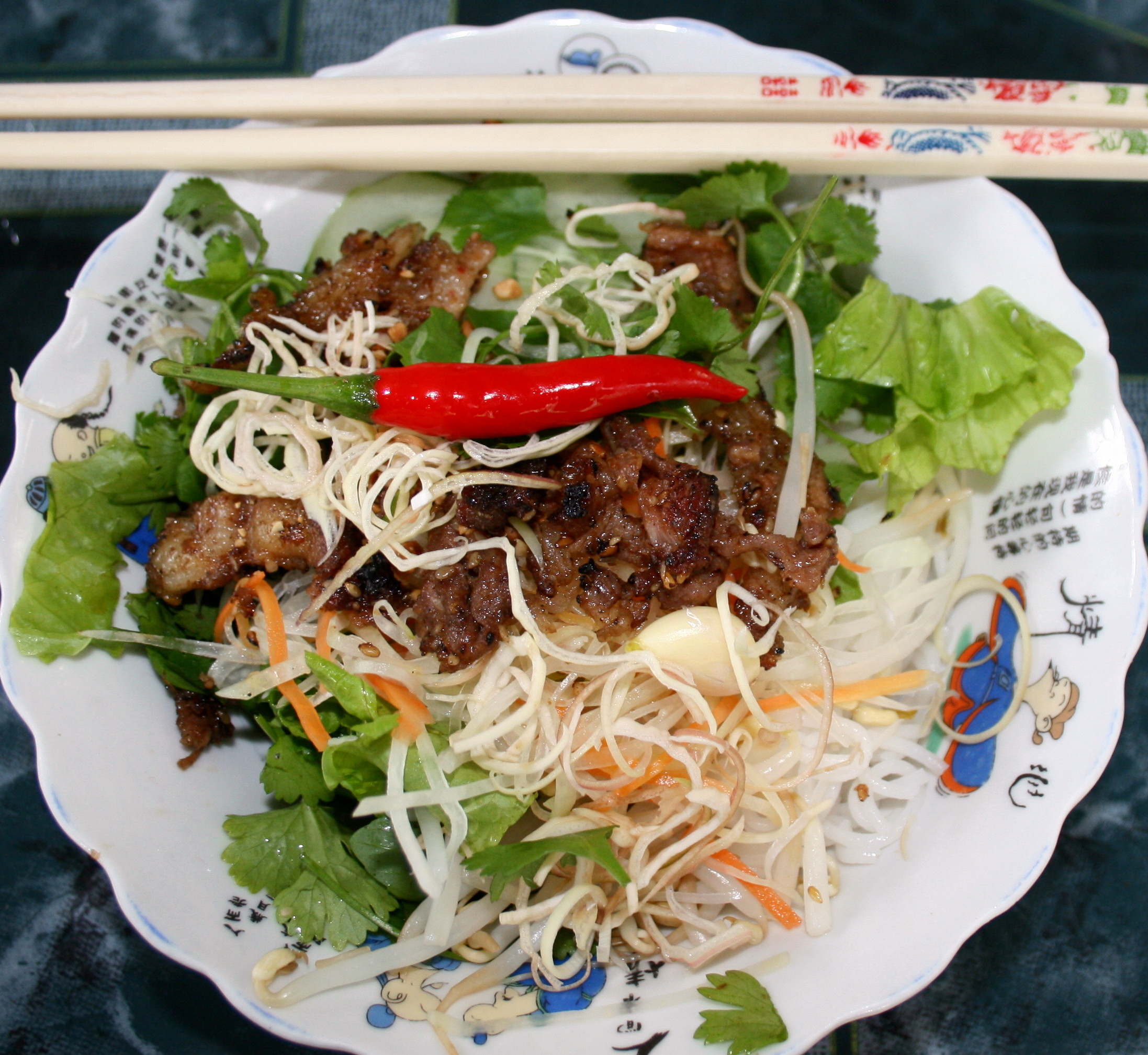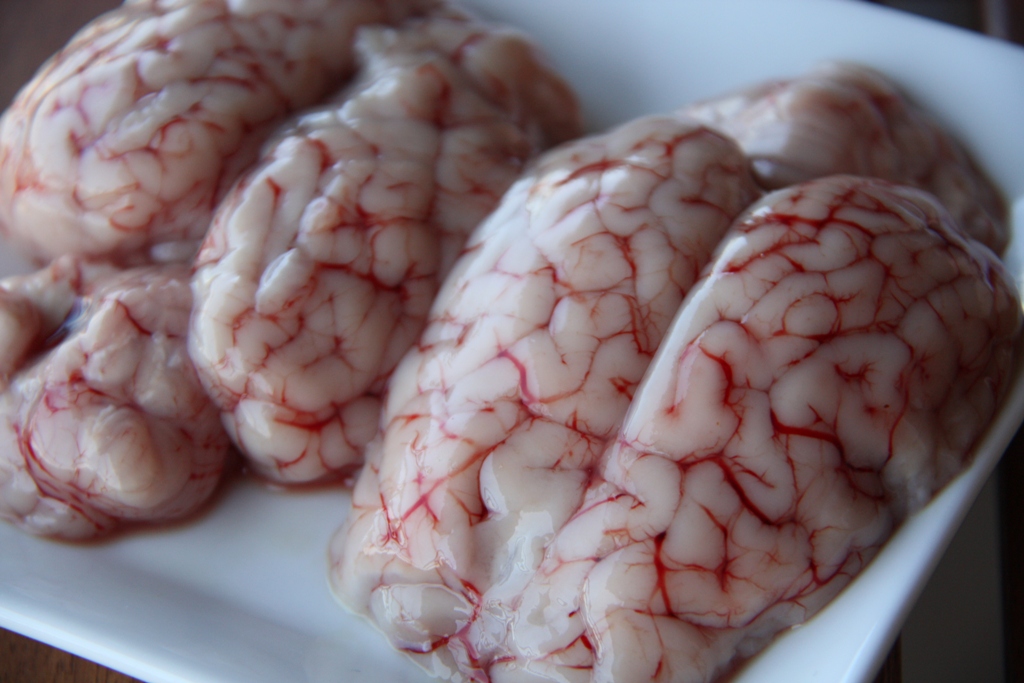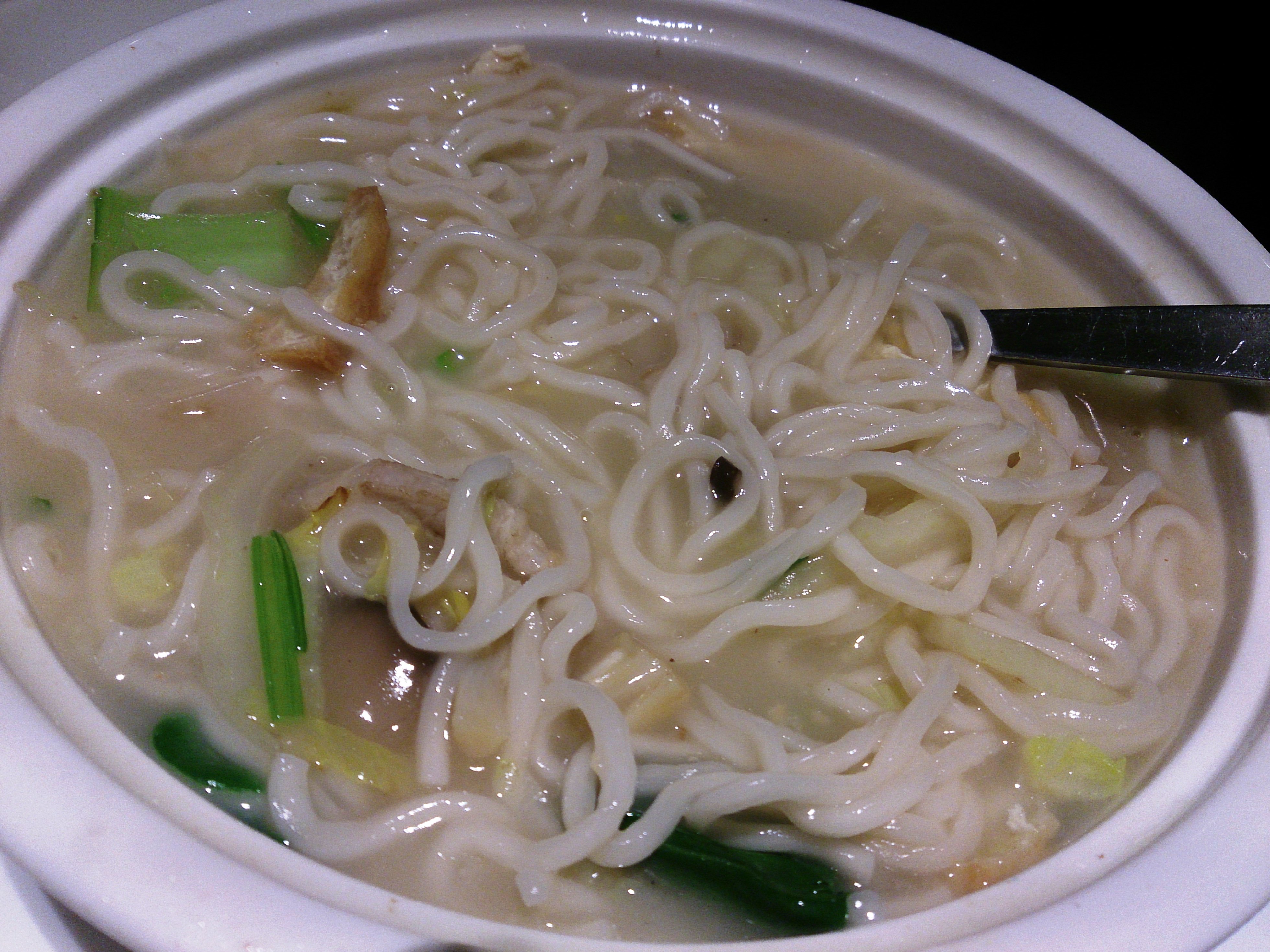|
Pancit Kinalas
Kinalas is a Bicol Region, Bicol dish consisting of noodles (''pancit'') garnished by scraped meat from pork or beef's head and other parts, enhanced with a thick deep-brown sauce coming from the brains of a cow or pig. The dish is further flavored with spices (labuyo chili, sili and pepper) and served in hot broth. Boiled egg added is optional. The name originates from the Bicol language, Bicolano verb ''kalas'', an alternate form of ''hinglas'', meaning "to remove the meat from the bones" usually in preparation for preserving it in salt or brine. The term is attested in the 16th century ''Vocabulario de la lengua Bicol'' by Maŕcos de Lisboa. See also *Batchoy *Goto (food) * List of noodle dishes References {{Noodle Philippine cuisine Mixed noodles Philippine noodle dishes ... [...More Info...] [...Related Items...] OR: [Wikipedia] [Google] [Baidu] |
Bicol Region
Bicol, known formally as the Bicol Region or colloquially as Bicolandia ( bcl, Rehiyon kan Bikol; Rinconada Bikol: ''Rehiyon ka Bikol''; Waray Sorsogon, Masbateño: ''Rehiyon san Bikol''; tl, Rehiyon ng Bikol), is an administrative region of the Philippines, designated as Region V. Bicol comprises six provinces, four on the Bicol Peninsula mainland (the southeastern end of Luzon) – Albay, Camarines Norte, Camarines Sur, and Sorsogon – and the offshore island provinces of Catanduanes and Masbate. The regional center is Legazpi City and has one Independent Component City, the pilgrim city of Naga. The region is bounded by the Lamon Bay to the north, the Philippine Sea to the east, and the Sibuyan Sea and Ragay Gulf to the west. The northernmost provinces, Camarines Norte and Camarines Sur, are bordered to the west by the province of Quezon. Geography The Bicol Region comprises the southern part of Luzon, the largest island in the Philippine archipelago. The total land a ... [...More Info...] [...Related Items...] OR: [Wikipedia] [Google] [Baidu] |
Main Dish
A main course is the featured or primary dish in a meal consisting of several courses. It usually follows the entrée ("entry") course. Typically, the main course is the meal that is the heaviest, heartiest, and most intricate or substantial on the menu. Typically, meat or fish is the main component; but, in vegetarian meals, the main dish will occasionally make an effort to resemble a meat course. Usage In the United States and Canada (except Quebec), the main course is traditionally called an "entrée". English-speaking Québécois follow the modern French use of the term entrée to refer to a dish served before the main course. According to linguist Dan Jurafsky, North American usage ("entrée") retains the original French meaning of a substantial meat course. See also * Full course dinner A full-course dinner is a dinner consisting of multiple dishes, or ''Course (meal), courses''. In its simplest form, it can consist of three or four courses; for example: first c ... [...More Info...] [...Related Items...] OR: [Wikipedia] [Google] [Baidu] |
Noodles
Noodles are a type of food made from unleavened dough which is either rolled flat and cut, stretched, or extruded, into long strips or strings. Noodles are a staple food in many cultures (for example, Chinese noodles, Filipino noodles, Indonesian noodles, Japanese noodles, Korean noodles, Vietnamese noodles, and Italian pasta) and made into a variety of shapes. While long, thin strips may be the most common, many varieties of noodles are cut into waves, helices, tubes, strings, or shells, or folded over, or cut into other shapes. Noodles are usually cooked in boiling water, sometimes with cooking oil or salt added. They are often pan-fried or deep-fried. Noodles are often served with an accompanying sauce or in a soup. Noodles can be refrigerated for short-term storage or dried and stored for future use. Etymology The word for noodles in English, was borrowed in the 18th century from the German word ''Nudel''. History Origin The earliest written record of noodles is fou ... [...More Info...] [...Related Items...] OR: [Wikipedia] [Google] [Baidu] |
Brain As Food
The brain, like most other internal organs, or offal, can serve as nourishment. Brains used for nourishment include those of pigs, squirrels, rabbits, horses, cattle, monkeys, chickens, camels, fish, lamb, and goats. In many cultures, different types of brain are considered a delicacy. Cultural consumption The brain of animals features in French cuisine, in dishes such as '' cervelle de veau'' and ''tête de veau''. A dish called maghaz is a popular cuisine in Pakistan, Bangladesh, parts of India, and diaspora countries. In Turkish cuisine, brain can be fried, baked, or consumed as a salad. In Chinese cuisine, brain is a delicacy in Chongqing or Sichuan cuisine, and it is often cooked in spicy hot pot or barbecued. In the southern part of China, pig brain is used for ''tianma zhunao tang''. In South India, goat brain curry or fry is a delicacy. Even in Mumbai, the local indigenous East Indian community has their own version of brain masala curry. Similar delicacies from around th ... [...More Info...] [...Related Items...] OR: [Wikipedia] [Google] [Baidu] |
Batchoy
Batchoy, less commonly spelled batsoy, is a noodle soup made with pork offal, crushed pork cracklings, chicken stock, beef loin and round noodles. Its origins can be traced to the district of La Paz, Iloilo City in the Philippines, hence it is often referred to as La Paz Batchoy. Origin Batchoy's true origin is inconclusive. Documented accounts include the following: * Ted's Oldtimer Lapaz Batchoy is the Philippine's largest La Paz Batchoy chain with more than 20 outlets nationwide. * Inggo's Batchoy opened his Batchoy stall in 1922 and literally the first Batchoy shop in La Paz, Iloilo City, 16 years Ahead than Deco's La Paz Batchoy Shop, which opened in 1938 *The dish was concocted by Federico Guilergan Sr. in 1938 in Iloilo His recipe called for a mixture of broth, noodles, beef and pork. The soup later evolved into its present form which has become Iloilo City's most popular dish. Federico Guillergan, Jr., the son of the soup's inventor, states that his father at first jokin ... [...More Info...] [...Related Items...] OR: [Wikipedia] [Google] [Baidu] |
Pancit
Pancit ( ), also spelled pansít, is a general term referring to various traditional noodle dishes in Filipino cuisine. There are numerous types of pancit, often named based on the noodles used, method of cooking, place of origin, or the ingredients. Most pancit dishes are characteristically served with calamansi, as its freshly-squeezed juice may be used for additional seasoning. Noodles were introduced to the Philippines by Chinese immigrants over the centuries. They have been fully adopted and nativized into the local cuisine, even incorporating Spanish influences. There are numerous regional types of pancit throughout the Philippines, usually differing on the available indigenous ingredients of an area. Unique variants do not use noodles at all, but instead substitute it with strips of coconut, young papaya, mung bean sprouts, bamboo shoots, or seaweed. Description The term ''pancit'' (or the standardised but less common ''pansít'') is derived from either the Philippine ... [...More Info...] [...Related Items...] OR: [Wikipedia] [Google] [Baidu] |
Labuyo Chili
''Siling labuyo'' is a small chili pepper cultivar that developed in the Philippines after the Columbian Exchange. It belongs to the species ''Capsicum frutescens'' and is characterized by triangular fruits which grow pointing upwards. The fruits and leaves are used in traditional Philippine cuisine. The fruit is pungent, ranking at 80,000 to 100,000 heat units in the Scoville Scale. The cultivar name is Tagalog, and literally translates to "wild chili." It is also known simply as ''labuyo'' or ''labuyo'' chili. It is also sometimes known as Filipino bird's eye, to differentiate it from the Thai bird's eye chili. Both are commonly confused with each other in the Philippines, though they are cultivars of two different species. ''Siling labuyo'' is one of two common kinds of local chili found in the Philippines, the other being ''siling haba'' (a ''Capsicum annuum'' cultivar). ''Siling labuyo'' is generally accepted as the world's smallest hot pepper, as the fruit often measure ... [...More Info...] [...Related Items...] OR: [Wikipedia] [Google] [Baidu] |
Broth
Broth, also known as bouillon (), is a savory liquid made of water in which meat, fish or vegetables have been simmered for a short period of time. It can be eaten alone, but it is most commonly used to prepare other dishes, such as soups, gravies, and sauces. Commercially prepared liquid broths are available, typically chicken, beef, fish, and vegetable varieties. Dehydrated broth in the form of bouillon cubes were commercialized beginning in the early 20th century. Broths have been used as a nutrition source for the sick in Great Britain since at least the early 1700s, such as for dysentery patients. Stock versus broth Many cooks and food writers use the terms ''broth'' and ''stock'' interchangeably. In 1974, James Beard wrote that stock, broth, and bouillon "are all the same thing". While many draw a distinction between stock and broth, the details of the distinction often differ. One possibility is that stocks are made primarily from animal bones, as opposed to mea ... [...More Info...] [...Related Items...] OR: [Wikipedia] [Google] [Baidu] |
Bicol Language
Central Bikol commonly called Bikol Naga, also known simply as Bikol, is an Austronesian language spoken by the Bicolanos, primarily in the Bicol Region of southern Luzon, Philippines. It is spoken in the northern and western part of Camarines Sur, second congressional district of Camarines Norte, eastern part of Albay, northeastern part of Sorsogon, San Pascual town in Masbate, and southwestern part of Catanduanes. Central Bikol speakers can be found in all provinces of Bicol and it is a majority language in Camarines Sur. The standard ''sprachraum'' form is based on the Canaman dialect. Central Bikol features some vocabulary not found in other Bikol languages nor in other members of the Central Philippine language family like Tagalog and Cebuano. Examples are the words and , which are the same as the Kapampangan words meaning 'older' and 'foot, feet', respectively. The word ('night') is another example of this as it is different from the usual Bikol word but closer to t ... [...More Info...] [...Related Items...] OR: [Wikipedia] [Google] [Baidu] |
Brine
Brine is a high-concentration solution of salt (NaCl) in water (H2O). In diverse contexts, ''brine'' may refer to the salt solutions ranging from about 3.5% (a typical concentration of seawater, on the lower end of that of solutions used for brining foods) up to about 26% (a typical saturated solution, depending on temperature). Brine forms naturally due to evaporation of ground saline water but it is also generated in the mining of sodium chloride. Brine is used for food processing and cooking (pickling and brining), for de-icing of roads and other structures, and in a number of technological processes. It is also a by-product of many industrial processes, such as desalination, so it requires wastewater treatment for proper disposal or further utilization (fresh water recovery). In nature Brines are produced in multiple ways in nature. Modification of seawater via evaporation results in the concentration of salts in the residual fluid, a characteristic geologic deposit call ... [...More Info...] [...Related Items...] OR: [Wikipedia] [Google] [Baidu] |
Goto (food)
''Goto'', also known as ''arroz caldo con goto'', is a Filipino rice and beef tripe gruel cooked with ginger and garnished with toasted garlic, scallions, black pepper, and '' chicharon''. It is usually served with calamansi, soy sauce, or fish sauce (''patis'') as condiments, as well as a hard-boiled egg. It is a type of ''lugaw''. Etymology The original complete name of the dish is ''arroz caldo con goto'' or ''arroz con goto'', derived from Spanish ''arroz'' ("rice") and '' caldo'' ("soup"); as well as Tagalog ''goto'' ("tripe"). Tagalog ''goto,'' ultimately derives from Hokkien 牛肚 (''gû-tǒ͘,'' "ox tripe"). Description ''Goto'' typically uses glutinous rice (''malagkit''), but can also be made with regular rice boiled with an excess of water. It is prepared almost identically to ''arroz caldo''. Rice is cooked with water infused with ginger, then garnished with toasted garlic, scallions, black pepper, and crumbled '' chicharon''. They are served on individua ... [...More Info...] [...Related Items...] OR: [Wikipedia] [Google] [Baidu] |
List Of Noodle Dishes
This is a list of notable noodle dishes. Noodles are a type of staple food made from some type of unleavened dough which is rolled flat and cut into one of a variety of shapes. While long, thin strips may be the most common, many varieties of noodles are cut into waves, helices, tubes, strings, or shells, or folded over, or cut into other shapes. Noodles are usually cooked in boiling water, sometimes with cooking oil or salt added. They are often pan-fried or deep-fried. Noodles are often served with an accompanying sauce or in a soup. Noodle dishes * ''Ash reshteh'' – a type of ''aush'' (Iranian thick soup) featuring ''reshteh'' (thin noodles) and ''kashk'' (a dairy product, made from cooked or dried yogurt), commonly made in Iran and Azerbaijan * ''Beshbarmak'' – a dish from Central Asian cuisine, usually made from finely chopped boiled meat with noodles and often served with ''chyk'', an onion sauce * Chow mein sandwich – typically consists of a brown ... [...More Info...] [...Related Items...] OR: [Wikipedia] [Google] [Baidu] |







